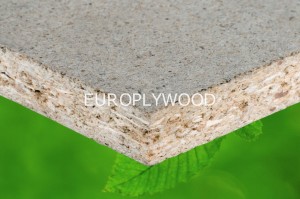CHIPBOARD
Definition
Chipboard is made from small chips of spruce and pine wood bonded together under pressure. A multi-layered mat is built out of the chips and hot-pressed under high pressure. Fine chips are placed at the top and bottom of the mat ensuring a smooth surface suitable for painting. After cooling down the boards are cut to size and sanded. Chipboard has high quality and excellent screw holding capability. Boards can be finished and coated differently.
Field of application
Chipboard comes in two grades. Standard grade is widely used in furniture manufacturing and general joinery, particularly where the boards will be covered by a veneer or laminate.
Flooring grade is meant for interior use, is produced as a square-edged panel and is also available with a grooved profile. Flooring chipboard grade is mainly used for building floors.
Chipboard is also widely used in construction, packaging and carpentry.
Thicknesses mm. 6, 8, 10, 12, 16, 18, 19, 22,25, 28,
Size mm 1830 x 2750, 2600 x x1200 other sizes on request
Classification according to the condition of surfaces
P2 (boards for interior fitments, dry), P3 (moisture resistant boards), P4 (load-bearing boards for use in dry conditions).
Glue type: Urea Carbamide (Interior)
Quality References: Technical Research Centre of Finland (VTT) and conformity to the CARB (California Air Resources Board) requirements by SP Technical Research Institute of Sweden.
Edges: Processing by waterproof acrylic paint
Formaldehyde emission: E1
Moisture content: max 10 %
Density:
Standard Grade which is about 650 Kg/m3
Flooring Grade which is about 720kg/ m3
 English
English  Eesti
Eesti 
